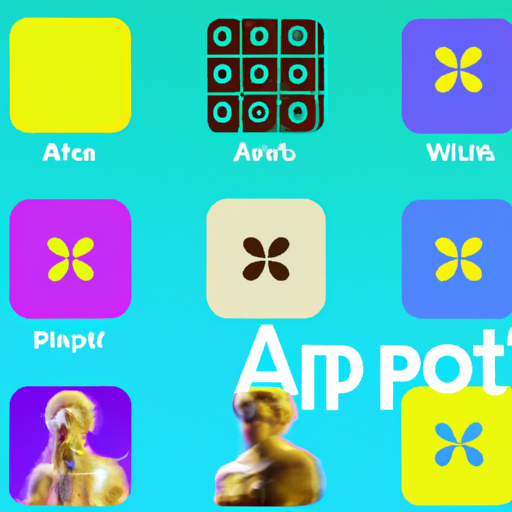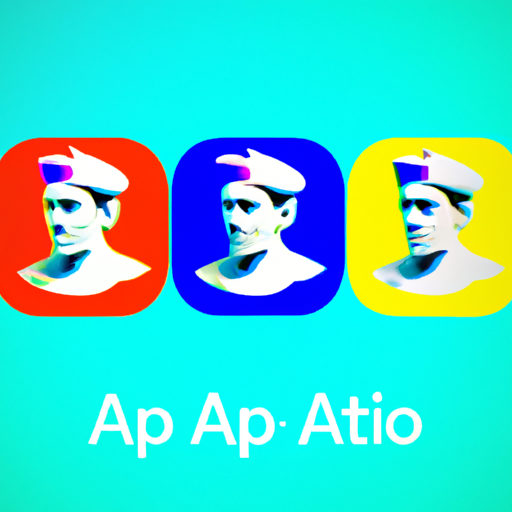
-
Table of Contents
- App Icons as Art: Incorporating Art Movements
- The Evolution of App Icons
- The Role of Art Movements in App Icon Design
- Examples of Art Movements in App Icons
- 1. Cubism
- 2. Pop Art
- 3. Surrealism
- The Benefits of Incorporating Art Movements in App Icons
- Case Studies: Successful App Icons Inspired by Art Movements
- 1. Instagram
- 2. Spotify
- 3. Headspace
- Conclusion
App Icons as Art: Incorporating Art Movements

App icons have become an integral part of our digital lives. They serve as the visual representation of an app and play a crucial role in attracting users and conveying the app’s purpose. While app icons are primarily functional, they also have the potential to be artistic and expressive. In recent years, designers have started incorporating various art movements into app icons, creating visually stunning and meaningful designs. This article explores the concept of app icons as art and how art movements can be incorporated into their design.
The Evolution of App Icons
App icons have come a long way since the early days of smartphones. Initially, app icons were simple and utilitarian, designed to be easily recognizable and distinguishable on small screens. However, as technology advanced and screens became more vibrant and high-resolution, app icons started to evolve into more visually appealing and sophisticated designs.
Today, app icons are not just functional but also serve as a form of self-expression for both app developers and users. They have become an essential part of branding and can significantly impact an app’s success. As a result, designers are constantly exploring new ways to make app icons more visually appealing and engaging.
The Role of Art Movements in App Icon Design
Art movements have always been a source of inspiration for designers across various mediums. From painting to graphic design, art movements have influenced the way we perceive and create visual art. The same holds true for app icon design.
By incorporating elements of different art movements into app icons, designers can create unique and visually striking designs that stand out in a crowded app store. Art movements provide a rich source of inspiration, allowing designers to experiment with different styles, colors, and compositions.
Examples of Art Movements in App Icons
Let’s explore some examples of how art movements have been incorporated into app icons:
1. Cubism
Cubism, pioneered by Pablo Picasso and Georges Braque, is characterized by fragmented forms and multiple perspectives. In app icon design, cubism can be used to create abstract and geometric compositions. For example, the app icon for a photo editing app could feature a cubist-inspired collage of fragmented images.
2. Pop Art
Pop Art, popularized by artists like Andy Warhol and Roy Lichtenstein, is known for its bold colors and use of popular culture imagery. In app icon design, pop art can be used to create eye-catching and vibrant designs. For instance, a music streaming app could incorporate pop art elements by using bright colors and iconic music-related imagery.
3. Surrealism
Surrealism, championed by artists like Salvador Dalí and René Magritte, explores the realm of dreams and the subconscious. In app icon design, surrealism can be used to create visually intriguing and thought-provoking designs. For example, a meditation app could incorporate surrealistic elements like floating objects or distorted perspectives to evoke a sense of calm and introspection.
The Benefits of Incorporating Art Movements in App Icons
Integrating art movements into app icons offers several benefits:
- Increased Visual Appeal: App icons inspired by art movements are visually striking and stand out among the sea of generic icons in app stores.
- Enhanced Branding: By incorporating art movements, app icons can effectively convey the app’s purpose and brand identity.
- Emotional Connection: Art movements evoke emotions and can create a deeper connection between the user and the app.
- Unique Identity: App icons inspired by art movements help apps differentiate themselves from competitors and establish a unique identity.
Case Studies: Successful App Icons Inspired by Art Movements
Several apps have successfully incorporated art movements into their icons, resulting in visually appealing and memorable designs. Let’s take a look at some notable examples:
1. Instagram
Instagram, the popular photo-sharing app, has an app icon inspired by the art movement of minimalism. The icon features a simple camera outline against a gradient background, representing the app’s focus on capturing and sharing moments in a clean and straightforward manner.
2. Spotify
Spotify, the music streaming app, has an app icon that incorporates elements of pop art. The icon features a vibrant green background with three sound waves, reminiscent of the bold and colorful imagery often associated with pop art. This design choice reflects Spotify’s energetic and dynamic approach to music.
3. Headspace
Headspace, a meditation and mindfulness app, has an app icon that draws inspiration from the art movement of surrealism. The icon features a floating lotus flower against a calming blue background, creating a sense of tranquility and introspection. This design choice aligns with the app’s goal of helping users find peace and clarity in their daily lives.
Conclusion
App icons have evolved from simple and utilitarian designs to visually appealing and expressive representations of apps. By incorporating elements of art movements, designers can create app icons that are not only functional but also artistic and meaningful. Art movements provide a rich source of inspiration, allowing designers to experiment with different styles and compositions. The benefits of incorporating art movements in app icons include increased visual appeal, enhanced branding, emotional connection, and a unique identity. Successful apps like Instagram, Spotify, and Headspace have demonstrated the power of art-inspired app icons in creating visually appealing and memorable designs. As app design continues to evolve, we can expect to see more app icons that blur the line between functionality and art.
